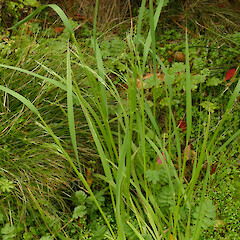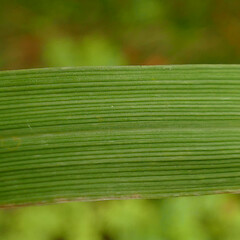Lachnagrostis pilosa subsp. nubifera
Common name
wind grass
Synonyms
None
Family
Poaceae
Flora category
Vascular – Native
Endemic taxon
Yes
Endemic genus
No
Endemic family
No
Structural class
Grasses
Current conservation status
The conservation status of all known New Zealand vascular plant taxa at the rank of species and below were reassessed in 2017 using the New Zealand Threat Classification System (NZTCS) – more information about this can be found on the NZTCS website. This report includes a statistical summary and brief notes on changes since 2012 and replaces all previous NZTCS lists for vascular plants.
Please note, threat classifications are often suggested by authors when publications fall between NZTCS assessment periods – an interim threat classification status has not been assessed by the NZTCS panel.
- Conservation status of New Zealand indigenous vascular plants, 2017 . 2018. Peter J. de Lange, Jeremy R. Rolfe, John W. Barkla, Shannel P. Courtney, Paul D. Champion, Leon R. Perrie, Sarah M. Beadel, Kerry A. Ford, Ilse Breitwieser, Ines Schönberger, Rowan Hindmarsh-Walls, Peter B. Heenan and Kate Ladley. Department of Conservation. Source: NZTCS and licensed by DOC for reuse under the Creative Commons Attribution 4.0 International licence.
2017 | At Risk – Naturally Uncommon | Qualifiers: DP, IE, RR
Previous conservation statuses
2012 | At Risk – Naturally Uncommon | Qualifiers: IE, RR
2009 | At Risk – Naturally Uncommon
2004 | Range Restricted
Distribution
Endemic. Confined to Auckland and Antipodes Islands
Habitat
Coastal, on margins of forest, in open scrub, or in damp ground at margins of tussock grassland. Sometimes amongst sedges or along cliff faces and associated talus slopes.
Detailed description
Usually a robust, wide-leaved, perennial forming tufts 50–900 mm tall, rarely more gracile. Branching intravaginal. Leaves usually harsh, dull green drying dark green. Leaf-sheath harsh textured, firm, striate, smooth or finely scabrid above, green to light brown. Ligule 1.3–6.0 mm, tapered, rounded, becoming denticulate, undersides finely scabrid. Leaf-blade 20–280 × 0.5–10 mm, flat, or rather harsh and involute above in plants from the Antipodes Islands; undersides with numerous fine, finely scabrid ribs, midrib prominent near base, upper surface finely ribbed and finely scabrid on ribs; margins finely scabrid, apex subobtuse. Culm 200–660 mm, usually included within the uppermost leaf-sheath, erect, internodes finely scabrid. Panicle 20–280 × 10–200 mm, at first stiff and contracted with erect branches, at maturity often more lax and ovate-elliptic; rachis smooth below, scabrid above, primary branches sparsely scabrid, filiform, very long, erect, secondary branchlets much shorter, very numerous, capillary, scaberulous, tipped by several clustered spikelets. Inflorescences paniculate, usually rather large, firm, pale green and many flowered. Spikelets 3–6 mm, light green (rarely purple-green). Glumes ± equal, smooth and membranous, rarely sparsely scabrid in upper half, acute to acuminate; lower elliptic-lanceolate, scabrid on upper ⅔ of keel, upper linear-lanceolate, scabrid on upper ½ of keel. Lemma 1.5–2.0 mm long, < ⅔ length of glumes, elliptic-oblong, truncate, densely hairy throughout, lateral nerves shortly excurrent; awn 0.5–3.5 mm long, straight from upper ⅓ of lemma. Palea elliptic-oblong, roughly the same length as lemma, nerves distinct, 0.2 mm apart, apex shallowly bifid. Callus hairs copious, very short to 0.5 mm long, one fifth to one quarter length of lemma. Rachilla prolongation to 0.5 mm, tipped by hairs to 1 mm long. Lodicules c. 0.5 mm long, lanceolate, acute. Anthers 0.5–0.8 mm long. Seed 1.3–1.8 × 0.4–0.6 mm.
Manaaki Whenua Online Interactive Key
Similar taxa
Lachnagrostis pilosa is distinguished from the other New Zealand species by the generally robust, stout growth habit and wide, grey-green, harsh textured leaves. Of those species with intravaginal branching it is immediately distinguished by wide leaves (2–10 mm wide cf. 0.5–3.0 mm wide), firm, robust panicle, and by the scattered to densely hairy lemma. Two subspecies are recognised: L. pilosa subsp. pilosa differs from subsp. nubifera by the shorter (0.5–3.0 mm in subsp. nubifera cf. 3.0–8.5 mm long in subsp. pilosa), straight rather than geniculate awns, and by the palea, which is almost equal or equal the length of lemma, rather than ½–⅗ in length. It differs from L. leptostachys (Hook.f.) Zotov with which it is sympatric on the Antipodes and Auckland Islands by the shorter, more densely hairy lemma, and by the shorter (not geniculate) awns, and palea which is almost equal or equal the length of lemma rather than ½ the length of the lemma.
Flowering
November–January (not well known)
Fruiting
December–March (not well known)
Propagation technique
Not known but probably easy from fresh seed and rooted pieces. Probably will dislike humid/warm climates.
Threats
Local endemic, common within its limited geographic range.
Etymology
lachnagrostis: From “lachne” (wool) referring to the distinctive callus hairs of this genus and “agrostis” by which Trinius (1820) actually meant “a grass” (not an Agrostis). So the generic name means “a hairy (woolly) grass” not “a hairy (woolly) Agrostis” as is often incorrectly stated (see Gardner 2014).
Where To Buy
Not commercially available.
Attribution
Description modified from Edgar and Connor (2000).
References and further reading
Edgar E, Connor HE. 2000. Flora of New Zealand. Vol. V. Grasses. Manaaki Whenua Press, Christchurch, NZ. 650 p.






